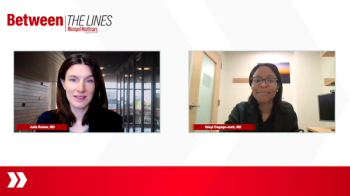
Clinical and Practical Comparisons of BCMA-Targeted Therapies in R/R MM
An expert discusses the evolving role of BCMA-targeted therapies in relapsed/refractory multiple myeloma (R/R MM), comparing the efficacy, safety, and logistical considerations of CAR T-cell therapies, bispecific antibodies, and antibody-drug conjugates, and emphasizing the importance of individualized treatment selection and ongoing refinement of therapeutic sequencing.
BCMA-targeted therapies have emerged as essential tools in managing R/R MM, particularly in patients who are triple-class refractory. While CAR T-cell therapies, bispecific antibodies, and antibody-drug conjugates all target BCMA, they differ significantly in their mechanisms, efficacy, safety profiles, and logistical demands. CAR T therapies generally yield the deepest and most durable responses, with median progression-free survival (PFS) ranging from 9 to 12 months. However, their use is limited by a lengthy manufacturing process, making them less ideal for patients needing urgent treatment.
Bispecific antibodies offer a more accessible and rapid alternative, with the ability to initiate treatment quickly, a key advantage for patients with rapidly progressing disease. Clinical trials have demonstrated response rates between 60% and 75%, with complete response rates around 25% to 40% and PFS ranging from 7 to 12 months, even in patients previously treated with BCMA-targeted therapies. These agents are also associated with a more manageable safety profile compared with CAR T-cell therapy, though infections, cytopenias, and the need for intravenous immunoglobulin and prophylactic treatments remain concerns. Step-up dosing and corticosteroid premedication help mitigate cytokine release syndrome, and many patients can receive treatment on an outpatient basis with proper infrastructure.
Antibody-drug conjugates such as belantamab mafodotin, which was previously withdrawn due to failure to meet confirmatory trial end points, may reenter the market pending recent data from newer trials. Belantamab’s use was previously constrained by ocular toxicities that required frequent ophthalmologic monitoring. Ultimately, treatment decisions must account for each patient’s age, comorbidities, prior therapy, and functional status. While CAR T may be ideal for eligible patients, bispecifics offer a more flexible and broadly applicable option. As real-world experience and trial data evolve, the optimal sequencing and integration of these BCMA-targeted modalities continue to be refined.
Newsletter
Get the latest industry news, event updates, and more from Managed healthcare Executive.
















































